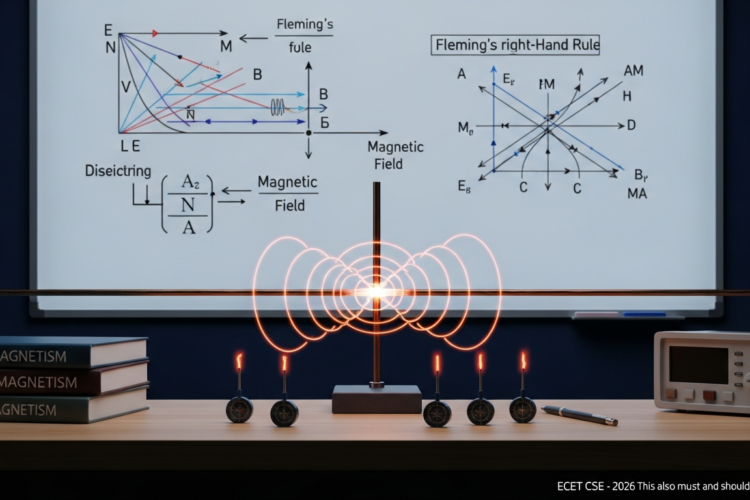
Python is one of the most popular, beginner-friendly programming languages today. In ECET 2026, Python questions will appear as part of the core CSE technical section, especially for students under the C-23 syllabus. A strong grip on Python basics can help you score fast and accurately. This post gives you a simplified overview of Python, along with 10 expected MCQs, answer key, and detailed explanations.
📘 Concept Notes – Introduction to Python
🐍 What is Python?
Python is a high-level, interpreted, and general-purpose programming language. It is known for its simple syntax, readability, and wide application in web development, data science, automation, AI, and more.
💡 Key Features of Python:
- Simple and easy to learn
- Interpreted language (line-by-line execution)
- Dynamically typed (no need to declare data type)
- High-level language
- Supports OOP (Object-Oriented Programming)
- Large standard library and active community
🧱 Python Basics:
- Variables don’t need explicit type declaration:
x = 10 # Integer
name = "Ravi" # String- Input/Output:
input("Enter your name: ")
print("Hello World")- Indentation is used instead of
{}blocks:
if x > 5:
print("Greater than 5") # Indentation matters!Data Types:
- Numbers (
int,float) - Strings (
str) - Boolean (
True,False) - Lists, Tuples, Sets, Dictionaries
🧠 Why Learn Python for ECET?
- Python is easy to learn and scoring.
- Questions often test basic syntax, keywords, and logic.
- Helps in real-world programming and future job prospects.
🔟 10 Most Expected MCQs – ECET 2026 [Introduction to Python]
Q1. What type of language is Python?
A) Compiled
B) Interpreted
C) Machine-level
D) Assembly
Q2. Which keyword is used to define a function in Python?
A) function
B) fun
C) def
D) define
Q3. Which of the following is a correct variable assignment in Python?
A) int x = 10
B) x := 10
C) x = 10
D) var x = 10
Q4. What will type("10") return?
A) int
B) float
C) str
D) bool
Q5. What is the output of: print(2 ** 3)?
A) 5
B) 6
C) 8
D) 9
Q6. How do you get input from the user in Python?
A) get()
B) ask()
C) input()
D) read()
Q7. Which symbol is used for comments in Python?
A) //
B) <!– –>
C) #
D) %
Q8. Which of the following is a list in Python?
A) {1, 2, 3}
B) [1, 2, 3]
C) (1, 2, 3)
D) <1, 2, 3>
Q9. What is the result of: print("Python"[0])?
A) y
B) P
C) n
D) h
Q10. Which of the following is a valid Boolean value in Python?
A) YES
B) NO
C) True
D) On
✅ Answer Key Table
| Q.No | Answer |
|---|---|
| Q1 | B |
| Q2 | C |
| Q3 | C |
| Q4 | C |
| Q5 | C |
| Q6 | C |
| Q7 | C |
| Q8 | B |
| Q9 | B |
| Q10 | C |
🧠 Explanations of All Answers
- Q1 → B: Python is interpreted, not compiled.
- Q2 → C: Functions are defined using
defin Python. - Q3 → C: Python uses
x = 10syntax without type declaration. - Q4 → C:
"10"is a string, not a number. - Q5 → C:
2 ** 3means 2 raised to the power of 3 = 8. - Q6 → C:
input()is used to take user input. - Q7 → C: Python uses
#for single-line comments. - Q8 → B: Square brackets
[]represent lists. - Q9 → B:
"Python"[0]fetches the first character →P. - Q10 → C: Python uses
TrueandFalse(case-sensitive).
🎯 Why This Practice Matters for ECET 2026
Python is easy to learn, easy to score, and commonly tested in ECET 2026 – CSE stream. These basic-level MCQs will help you build foundational confidence and answer technical questions with speed and accuracy. Python also prepares you for real-world programming after college.
📲 Join Our ECET Prep Community on Telegram
Get Python MCQs, PDF notes, coding challenges, and ECET prep tips in one place!
👉 @LearnNewThingsHub
Join the smart learning squad today!



